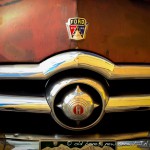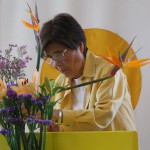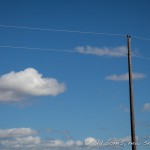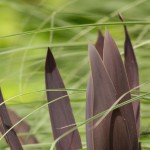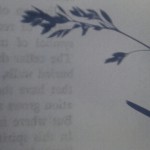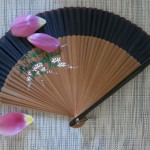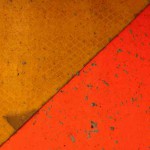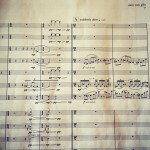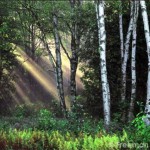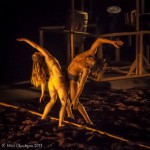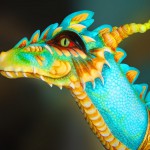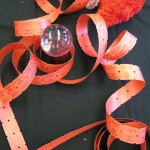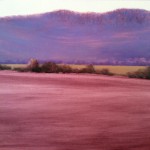Friday
Poetry by Mark Frutkin
A Word from Mark
These poems have not been published previously. They have a particular influence from my experience with meditation and the Shambhala path. I studied poetry with Allen Ginsberg when I attended Naropa Institute in Boulder, Colorado in Summer of 1976, where I also studied with other writers and heard a number of public talks by Chögyam Trungpa, Rinpoche. I have been a Buddhist meditator and a writer since the early 1970s, served as the head of the Ottawa Shambhala Centre for several years, and was appointed as the Warrior of the Centre several years ago. I have taught poetry at numerous locations: Carleton University (Ottawa), Ottawa Shambhala Centre, and Naropa Institute in Halifax. If anyone is interested in contacting me, I can be reached at [email protected]. I hope you enjoy these poems appearing in the Shambhala Times.
Without Emptiness
Without emptiness
there would exist
no spaces between fingers
or toes
leaving us with useless lumps
for hands and feet
Without emptiness
there could be no life,
for the womb
is an empty space
within each female
where life begins
Without the emptiness of space
there would be nowhere for planets
to travel or stars to move,
they would be like stones
stuck in ice,
the hunter Orion would be locked
in a cave, hibernating
with the bear known as Ursa Major
Without emptiness
nothing could happen
because there would be no space
for the poem to arise
for the lungs to breathe.
Without the emptiness of the blank page
the poem could never be written down,
without the silence in the air
the poem could never be heard.
Without emptiness
There would be no life.
Mixing Mind with Space
In meditation we say
we mix our mind with space
Blue sky
Black hole
Deep valley
Hollow mountain
Thoughtless afternoon
Dreamless sleep
Emptied drawer
Empty pocket
Car out of gas
by the side of the road
Dead horse
beside the trail
The non-number zero
A million, billion, trillion zeros
Inner ear
Outer space
Mute man
Blind woman
One minus one
One trillion minus one trillion
Blank page
Invisible ink
Leap freely
from the towering period
at the end of the poem.
Aphorism
The only way to feel
completely grounded
is to fully accept
groundlessness.
Gap
When the breath
goes out and dissolves
there’s a gap
before the next breath
is drawn in –
that gap is called
the bardo of the breath.
White Butterfly
Frantic, chaotic
the flight of the white butterfly
unstuck, unlike the leaf
stuck to its branch, its tree,
unlike the cloud pushed
in a particular direction
by prevailing winds,
unlike the stone
which moves not at all
but simply is worn away
while sinking into earth –
the white butterfly is driven,
unable to make any decision,
a bit of living trash
flicking this way and that
so like our all too
human minds.
Deep Simplicity
In Deep Simplicity
simply breathe.
Breathing in
is the world breathing out,
breathing out is the world
breathing in.
It’s that simple.
The Space that Allows
Sky is simply the space that allows
the arising and passing
of sun, moon, stars,
clouds, all celestial phenomena,
comets, lightning
and the flight of crows,
starlings and eagles,
sky is the space that allows
Eternity is the space that allows
all times: seconds, minutes, hours,
days, weeks, months,
years, lifetimes, centuries
and millennia,
eternity is the space
that allows time
Silence is the space that allows
sound: words in conversation,
songs, trill of warbler,
caw of crow,
crash, lightning, shouts,
wash of sea, trickle of creek,
silence is the space
that allows sound
The human body is the space that allows:
the empty stomach makes room
for the food to sustain life,
the empty mind
allows clarity, imagination
and the arising of new ideas,
the womb is the space that allows
the fertilized egg to grow
into new life
And finally, love is the space that allows
all emotion,
the wide-open heart that accepts
anger, joy, depression,
reconciliation, relief,
elation, happiness,
sadness, patience and empathy,
love is the space
that allows all emotion.
***
Mark Frutkin lives in Ottawa and has published 19 books, including fiction, non-fiction, and four collections of poetry, in Canada, the US, Britain, and in seven foreign translations.
His 2006 novel, Fabrizio’s Return (Knopf), won the Trillium Award and the Sunburst Award, and was a finalist for the Commonwealth Book Prize (Canada/Caribbean). His novel, Atmospheres Apollinaire (Porcupine’s Quill) was a finalist for the GG award for fiction. And finally, two of his collections of poetry have been finalists for the Ottawa Book Award. Further information on his books can be found on his website at www.markfrutkin.com
Mark came to Canada (his mother’s birthplace) as a draft resister in 1970 during the Vietnam War and lived for nine years in western Quebec in a log cabin with no electricity and no running water. Having grown up in Cleveland, Ohio and attended Loyola University in Chicago, his unusual experiences in the Canadian bush sparked his interest in poetry and it was in the cabin where he first started writing. He hopes you enjoy his work.
Entries filed under Arts and Poetry
Becoming Marilyn Monroe – HIGHLIGHT
Alice as Marilyn,Last Summer I lived Twelve Hours as Marilyn Monroe by Alice Toohey, Los Angeles I did this on August 4, 2013 – the 51st anniversary of Marilyn’s death. I created a bedroom, inspired by photos of her various bedrooms in a performance space in Los ... continuePosted January 6, 2014 by
Poetry Space – HIGHLIGHT
Welcome to the first installment of Poetry Space on the Shambhala Times! by Jeff Fink, Column Host When we went to the sangha in early October with a request for original work from members, we had no idea what might arise. In point of fact, in the ... continuePosted November 29, 2013 by
Pure Beauty: The Cosmos in a Vase – HIGHLIGHT
Celebrating Kalapa Ikebana teacher Seibi Watanabe Sensei on her 90th birthday article by Pam Rubin photos by Sarah Shima In a modest neighborhood of Montreal, an immaculately clean, jewel box of a house shelters a treasure of the Shambhala community: Seibi Watanabe Sensei. If you find yourself in her ... continuePosted November 20, 2013 by
Introducing: Poetry Space – HIGHLIGHT
NEW COLUMN: Poetry Space introduction by Jeff Fink, Shambhala Times Poetry Coordinator “Asking my father to tell me about basic goodness often led to poetry…Poetry, art, or gesture is used, because beyond intellectual understanding, each allows feelings to arise.” ~ Sakyong Mipham Rinpoche, The Shambhala Principle, pg. 23 continuePosted October 14, 2013 by
Autumn Snapshots of Basic Goodness – HIGHLIGHT
, Birmingham, ALThis monthly feature highlights snapshots of basic goodness taken by YOU, our readers, as seen out in the world, on the street, in the countryside, in another country, at work, home, garden or grocery store. In Shambhala, we embody the tradition, practice and lineage of ... continuePosted September 7, 2013 by
Breath’s Sibling – HIGHLIGHT
On Contemplative Being by Ginger Teppner, Naropa University Contemplative writing (breath’s sibling) creates a portal that connects interior to exterior. The term contemplation inhabits this space of attention. It requires focus and deliberate release. The release of the known. It is not enough to explore the interiority of ... continuePosted August 28, 2013 by
Effortless Beauty – HIGHLIGHT
Acharya Dan Hessey Interviews Julie DuBose My name is Dan Hessey, and I’m here with Julie DuBose, author of Effortless Beauty: Photography as an Expression of Eye, Mind, and Heart. It must be exciting to publish this wonderful book. The photographs are really beautiful and the writing ... continuePosted August 12, 2013 by
“What stopped you?” – HIGHLIGHT
article by Luz Rodriguez photos by Grace Wood, Marij van Haren, Sigrid Olschinski and Danielle Roeleveld During the 4 days of Miksang Level I at Dechen Choling, the question we faced at every evening session when reviewing the assignments we received for the day, was “What stopped you?” ... continuePosted July 27, 2013 by luz_rodriguez
On Composing a Symphony – HIGHLIGHT
Alex at rehearsalPhoto credit: Leslie GossettAn interview with composer Alex Van Gils by Shastri Manuel Medeiros On a warm June evening, the University of California Davis Symphony Orchestra performed their final concert of the season at the elegant Mondavi Center for the Performing Arts on the university campus. Among ... continuePosted June 30, 2013 by
Perception Warrior – HIGHLIGHT
Lights in the ForestCelebrating Photographer Freeman Patterson by John McQuade This is a birthday remembrance for the great Canadian photographer Freeman Patterson. He celebrated his 75th birthday last year and many admirers celebrated with him. For many decades, Freeman has been a major figure in the Canadian and ... continuePosted June 19, 2013 by
Snapshots of Basic Goodness: June – HIGHLIGHT
My friend’s cat as unperturbed model. Just sitting and enjoying and at the same time awake and alert. , NetherlandsThis monthly feature highlights snapshots of basic goodness taken by YOU, our readers, as seen out in the world, on the street, in the countryside, in another ... continuePosted June 8, 2013 by
Discovering Sound – HIGHLIGHT
Mbongui spectacleCOLUMN: In Everyday Life In this Shambhala Times exclusive interview, we take an in-depth look at the life and art of Herb Elsky, resident of Mas Marvent, France. More of Mr. Elsky’s work can be seen online by clicking here. edited by Ani Dawa Chotso “Something the Vidyadhara ... continuePosted May 5, 2013 by
Turquoise dragon meets Turquoise Princess
by Margaret Scott What do Einstein and the Mukpo family’s newest addition have in common? They were both born on March 14th. Both Pisces. Welcome to Jetsun Yudra Lhamo Yangchen Ziji Mukpo. She appeared in Halifax, Nova Scotia, in the Year of the Snake to the Sakyong and Sakyong ... continuePosted April 9, 2013 by
You Don’t ‘Make’ Art! – HIGHLIGHT
Today we celebrate Shambhala Art Day on the Spring Equinox Shambhala Art Day has been designated by Sakyong Mipham Rinpoche to occur on the spring equinox. It is a day when the entire Shambhala community and friends are invited to celebrate art forms and disciplines that embody ... continuePosted March 20, 2013 by
A Painting’s Progression – HIGHLIGHT
paintings and article by Christine Labich Pioneer Valley Shambhala Center I’ve noticed lately that painting is a lot like moving forward in life. Inspiration, action, communication, and letting go seem to have their place. In the case of this painting, the inspiration came from a particular field that ... continuePosted March 19, 2013 by
![]() RSS feed for the Arts and Poetry category
RSS feed for the Arts and Poetry category
View all posts from authors in Arts and Poetry: jillian_johnson




